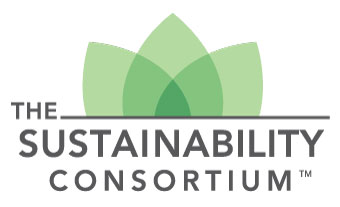Approaching Five: Taking the Long Term View at The Sustainability Consortium
How we tackle opportunities to drive a new generation of sustainable products is hugely challenging but no longer insurmountable.
By Kara Hurst, CEO, The Sustainability Consortium®
Over the past four and a half years, The Sustainability Consortium has, like many entrepreneurial and fast-growing initiatives, changed course more than once. However, our overall goal of creating tools that drive a new generation of sustainable products continues to be our core purpose and mission.
Luckily, the companies, NGOs, government regulators and academic researchers we partner with are working in lockstep with us. They constantly challenge us to move faster, dig deeper, generate new ways of improving the quality of our work, and – this one is key – transform the work we’ve generated into simplified, easy-to-use tools that reach an audience much wider than our current membership.
As a leader at TSC®, people ask me all the time what my top priority is. And while, to me, the answer might feel like: “everything, all at once, all day long,” the reality is that we only succeed by building on our strengths.
Here are five things we’re focused on at TSC and what we believe will drive impact in the future.
Five Building Blocks to Impact at TSC
1. Research
As a research organization, we bring a much-needed science-based approach to identifying environmental and social issues across a broad swath of product categories.
In a world of strategy, platforms, goals, initiatives, greenwashing and bluewashing, it is essential that we are able to a take a step back and examine the validity of the basis for those strategies. Information that has the potential to change business decision-making must be deeply rooted in and based on a rigorous, science-based, transparent methodology and process.
Additionally, we have been striving to make the science accessible and business-friendly. But moving from science to business implementation is not easy and we are learning as we go, and our tools have seen some early and promising success.
2. One System
The sustainability field does not lack for indicators, surveys, ratings schemes, cross-sector working groups or industry initiatives. The gap that TSC fills is to provide an approach for companies who sell, buy, produce and/or procure multiple products to look across their product portfolio and implement one system. Any system that is created needs to be easily accessible, broadly available and able to remove as many barriers to entry as possible.
For instance, we’ve recently partnered with SAP to enable the first cloud-based solution to support this implementation and we’ll continue to dig into the barriers to implementing one system, including creating partnerships, connections and interoperability wherever possible. This collaboration happens both on issue expertise as well as technology solutions.
3. Networks
We’ve taken the idea of partnership seriously. Our network crosses many boundaries-sectors: public, private, government; industries: electronics, toys, home and personal care, paper, pulp, forestry, food, beverages, agriculture; andgeographic expansion globally.
When most people think of collaborating with multiple organizations, they see the complexity in the decision-making and the ultimate drag on process and resources. And, this is true. The old adage of “go slow to go fast” also holds quite true for TSC.
The good news is over the past five years, at times we have gone slow, and we’re now positioned to go fast. Very, very fast.
4. Catalyzing Innovation
Being opportunistic sometimes gets a bad rap. However, the combination of opportunistic with strategic focus can yield some terrific results. We’ve seen – in a combination of the successes noted above: research capabilities, building systems, being highly networked –we are in a terrific position to do two things to catalyze innovation: (1) determine gaps in the research and what needs more convening; and (2) convene partners across a wide variety of stakeholder groups to make progress on those issues.
Note: I didn’t say solve—but to make progress. Some examples of this include the working group on End of Life in Electronics; the creation of Commodity Mapping tools; and our work on principles surrounding sustainable seafood.
5. Laser Focus on Impact
I ask myself one question every day to shape my to-do list: “what is the one thing I need to do today that will make the most impact on our mission?”
All of this work – data, research, systems, information, a networked organization, etc. – all of it means nothing if our work is not being integrated into business decision-making. We need to continue to simplify, translate, communicate and dig deeper to find the things that are truly working to implement this work. Simply put: use of the work = change in products = greater social and environmental benefits for people and the planet.
The Next Five Years
How we tackle these opportunities to drive a new generation of sustainable products is hugely challenging but no longer insurmountable. It’s mainly just very hard to do, but—and this is the good news: it is no longer confusing or overwhelming.
As with most startups, we continue to discover a number of things about our work and how businesses are using it only once we have launched the products. We will continue to refine and simplify our tools. The early success we’ve had has both defined our progress and also remains our challenge for the next few years.
As nothing in this long and winding journey is “finished,” nor would we expect it to be for some time, the path to continuous improvement involves building on our core. We’ve built trust, networks and systems. We’ve built an organization, a methodology, consensus on the issues and a process for continuous improvement and iteration as we learn.
We’ve built the start of true and lasting transformation.
And we will keep working on the monumental challenge of understanding, addressing and changing the impacts of the products we are consuming globally. We’ll also keep pushing for better conversations, higher quality, faster pace and wider adoption of this work.
The next five years will likely be even more challenging than the first. We can’t wait.


